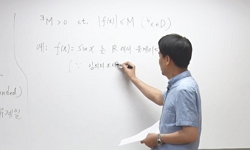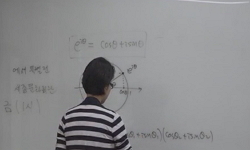Lotus Sutra (Saddharma-pundar?ka-s?tra) is one of the much translated Sutras. But it has been having the meaning uncleared or translated with no hard ground. Of them, I"d like to narrow down the four terms such as ren-fei-ren(人...
http://chineseinput.net/에서 pinyin(병음)방식으로 중국어를 변환할 수 있습니다.
변환된 중국어를 복사하여 사용하시면 됩니다.
- 中文 을 입력하시려면 zhongwen을 입력하시고 space를누르시면됩니다.
- 北京 을 입력하시려면 beijing을 입력하시고 space를 누르시면 됩니다.
https://www.riss.kr/link?id=A76467157
- 저자
- 발행기관
- 학술지명
- 권호사항
-
발행연도
2002
-
작성언어
-
- 주제어
-
KDC
220
-
등재정보
KCI우수등재
-
자료형태
학술저널
-
수록면
151-170(20쪽)
- 제공처
-
0
상세조회 -
0
다운로드
부가정보
다국어 초록 (Multilingual Abstract)
Lotus Sutra (Saddharma-pundar?ka-s?tra) is one of the much translated Sutras. But it has been having the meaning uncleared or translated with no hard ground. Of them, I"d like to narrow down the four terms such as ren-fei-ren(人非人), gong-dian(宮殿), xue-wu-xue(學無學), fei-you-xiang-fei-wu-xiang(非有想非無想) which has been differently translated among Korean versions.<BR> To assert the meaning of them above, I tried to make comparison of Miao-fa-lian-hua-jing(妙法蓮華經) translated by Kum?raj?va, Zheng-fa-lian-hua-jing(政法華經) translated by Dharmaraksa, and sanskrit-version of Lotus Sutra. And the commentaries of Zhiyi(智頭), Jizang(吉藏), Kuiji(窺基), Jiehuan(戒環) and Myo-beop-yeon-hwa-gyeong-en-hae(妙法蓮華經諺解) worked at gan-gyeong-do-gam(刊經都監) in king Sejo(世祖) of Joseon(朝鮮) period are refered as well. So I can reach the conclusion as follow.<BR> First, the term of ren-fei-ren(人非人) classified in the end of the eight classes of supernatural beings(八部衆) is not translated for the object to be called just as, "man and non-man" or "a being resembling but not a human" but the closing words of the eight classes of supernatural beings as "etc". Second, gong-dian(宮殿) carried by Heavenly beings is understood not as the "vehicle" but "palace". Third, in case of xue-wu-xue(學無學), though translating "the man who study A?aiiksa(無學)" it is much reasonable to understand "?aiksa(有學) and A?aiiksa". And the last, fei-you-xiang-fei-wu-xiang(非有想非無想) is verified "the beings with neither thinking nor not-thinking", far from the two objects of one who has "not-thinking" and who has "thinking."
목차 (Table of Contents)
- Ⅰ. 서언
Ⅱ. 人非人의 해석
Ⅲ. 天神이 대동하고 다니는 ‘宮殿’의 의미
Ⅳ. 學無學人의 번역
Ⅴ. 非有想非無想의 해석
Ⅵ. 맺는 말
English Summary
- Ⅰ. 서언
Ⅱ. 人非人의 해석
Ⅲ. 天神이 대동하고 다니는 ‘宮殿’의 의미
Ⅳ. 學無學人의 번역
Ⅴ. 非有想非無想의 해석
Ⅵ. 맺는 말
English Summary
동일학술지(권/호) 다른 논문
-
- 불교학연구회
- 조윤호(Cho Yoon-ho)
- 2002
- KCI우수등재
-
- 불교학연구회
- 박상수(Park Sang-soo)
- 2002
- KCI우수등재
-
- 불교학연구회
- 이지수(Lee Ji-soo)
- 2002
- KCI우수등재
-
僧伽羯磨의 성립 조건에 관한 고찰- 첨파 건도를 중심으로
- 불교학연구회
- 이자랑(Lee Ja-rang)
- 2002
- KCI우수등재





 RISS
RISS 스콜라
스콜라






